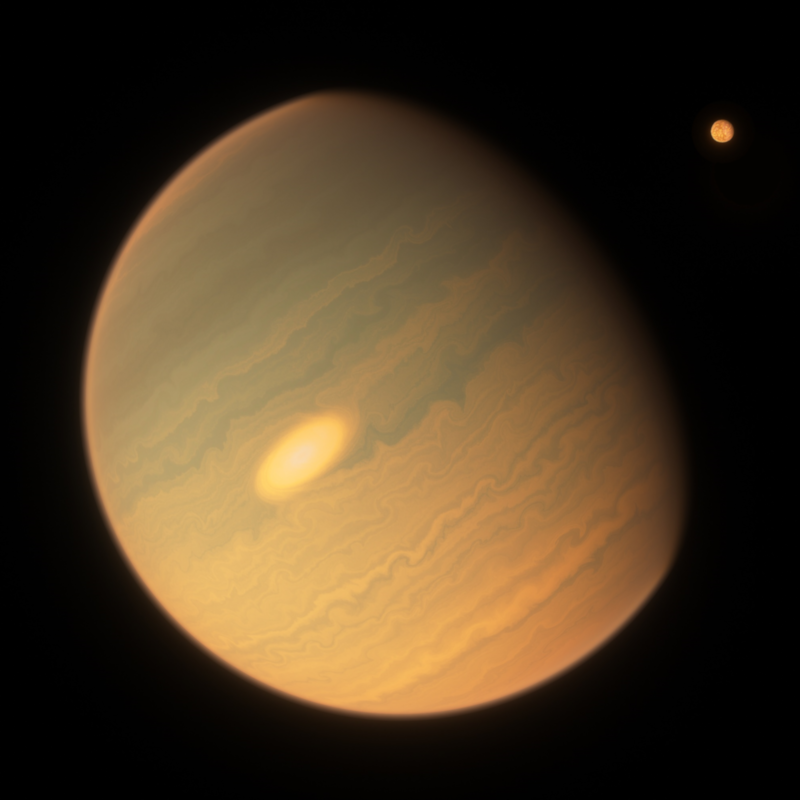Atlas
Atlas is a nephelic planet in the Proxima Centauri system. It is the third world from its sun, and hosts an impressive collection of seven major moons. One of these, Calypso, bears a native biosphere including a sophont species (Calypsians).
Geography
Location
Atlas is the third planet from its sun, orbiting just beyond the frost line in the right spot for ammonia to be stable in liquid form. As the largest planet in the system its presence shepherds the sparse Proxima Belt between it and Menoetes. Atlas' gravitational sphere of influence extends far enough to possess a large, stable moon system, composed of seven planetoid satellites collectively called the Atlantides. These objects are mostly very small, airless, and primarily composed of various kinds of ices, much like the moons of Saturn; however the four outermost moons are significantly larger than the others and possess moderate atmospheres. The largest of these, Calypso, also has a strong magnetic field, liquid ammonia cycle, and endemic biosphere.Structure
Atlas is primarily composed of hydrogen and helium, with notable traces of the noble gases and a significant proportion of volatiles in high-pressure ice form. The dominant ices within Atlas are ammonia, water, and methane, insulating a core of semi-liquid metallic hydrogen with a gradient of density -like all ice giants, no solid surface exists. The outer atmosphere is divided into multiple white-and-blue bands at different latitudes thanks to imbalances in solar heating and chemical composition; the northern hemisphere is mostly composed of ammonia with hydrocarbon streaks, while the southern hemisphere has an overlying hydrocarbon haze with "cloud trenches" into the deeper ammonia sky. The equatorial border between these zones is a violently turbulent boundary, producing moon-sized superstorms with regularity.Ecosystem
Atlas hosts no biosphere of its own. However, the moon Calypso has an endemic biosphere of abiogenetic origin: the Calypsigenid group. These organisms are carbon-based; however, their functional solvent is ammonia, and their primary metabolic cycle is the hydrogen-methane loop.
Archive Data
- Donakis (selena)
- Mermesa (erima)
- Aiopis (erima)
- Nelisa (chiona)
- Tara (chiona)
- Calypso (aquaria)
- Antheia (chiona)
- 92.6% H2
- 7.0% He
- 0.3% CH4
- >0.1% other gases
(ATLANTID SPHERE)




Comments